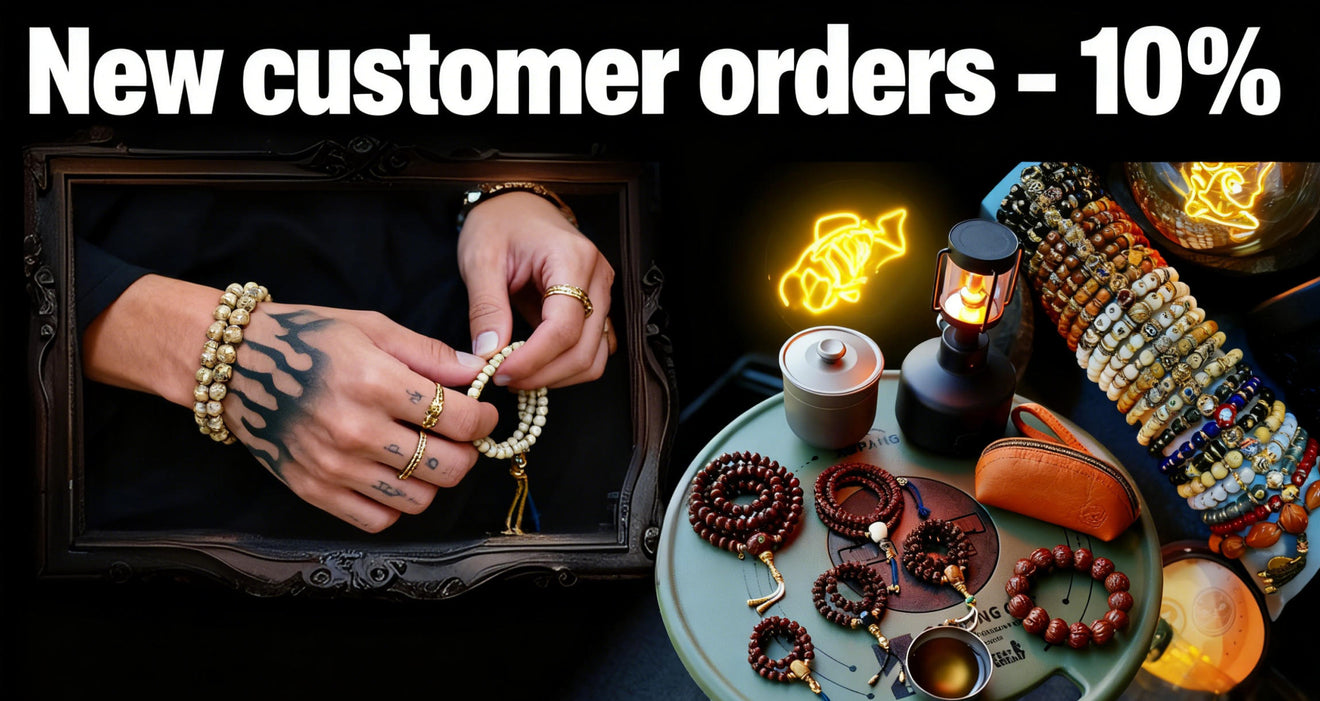
Within the intricate fabric of Tibetan Buddhism stand two meaningful icons: the detailed thangka and symbolic bodhi ornament. All individually, in distinct form, function to connect with higher wisdom. The thangka, a decorative panel, renders enlightened figures, ritualistic patterns, or sacred legends, acting as a focus for contemplative thought.
Simultaneously, the bodhi bead, often crafted from fine gems, wooden material, fruit stones, or osseous matter, is a tangible reminder of Buddha's liberation under the bodhi tree. Employing the beads assists in mental stillness.
- Jointly, the thangka and the bodhi bead signify the marriage of image and mindfulness. They offer a tangible link to the sacred teachings of Tibetan Buddhism.
Legends Echoed from Camel Remains
Within historic timelines, primordial treasures whisper tales concerning a world long vanished. These are not sparkling objects of shadowed empires, but plain camel bones engraved with figures that enclose the mysteries of a bygone cycle. All elements preserve the echo originating from a life lived, a journey traveled, and a connection to the ancestral wisdom of which includes us all.
- Those
- Elements
- Function as
Exploring the Mystical World of Thangka Art
Tangkas are vibrant paintings on canvas, meticulously crafted by Tibetan artists to depict consecrated figures and scenes from Buddhist literature. Each detail within a thangka is laden with interpretation, forming a complex tapestry of visual narratives that guide the viewer on a spiritual journey. The tints used in thangkas are not merely aesthetic choices but carry meaningful connotations, exemplifying different aspects of the Buddhist tradition. From the solemn figures to the intricate layouts, thangkas offer a portal into the rich world of Tibetan Buddhism, inviting us to consider upon its teachings.
- Authentic thangka art often depicts key Buddhist figures such as Buddha Shakyamuni, Bodhisattvas like Avalokiteshvara and Manjushri, and enlightened beings from various traditions of Tibetan Buddhism.
- Across these representations lies a wealth of learnedness that can be unlocked by those who explore the symbolic language of thangkas.
Enlightened One's Path to Enlightenment: Embodied in Beads and Bone
Upon the winding way to enlightenment, the Buddha harnessed icons imbued with profound value. Separate bead and material held within them the essence of his teachings, revealing glimpses into the fabric of reality. Via their shape, the Buddha expressed profound insights that transcend the realm of ordinary perception.
From the spiritual beads, crafted from ancient materials, flowed vibrations that synchronized with the refined waves within. The material of a organism, meticulously transformed into symbols, served as tangible reminders of the impermanence innate to all phenomena.
Thangkas: Windows into Himalayan Spirituality
Thangkas vivid paintings on cloth serve as potent representations of Himalayan spirituality. These intricate works of art, meticulously created with delicate brushstrokes, depict a vast array comprising Buddhist deities, mandalas, and scenes from time-honored scriptures. Each thangka is a visual guide for meditation and contemplation, offering discernment into the intricate teachings of Buddhism.
- They are often used in ritual ceremonies and
- reflecting states of spiritual enlightenment.
- Thangkas operate as not merely decorative works but rather entries into the rich and engaging world of Himalayan spiritual traditions.
The Allure of Bodhi Beads: Exploring Mindfulness and Compassion
Each unit on a bodhi bead mala whispers tales of ancient wisdom, guiding us on a journey through the tranquil waters of mindfulness. As we grip these intricately crafted beads, our fingers trace the contours of singular one, anchoring our consideration in the present moment. The gentle feel of the beads against our palms serves as a tangible reminder to respire, fostering a sense of composure.
- As each bead that passes between our fingers, we grow compassion, extending it first to ourselves and then outward to the world.
- Eastern philosophy teaches us that mindfulness is a discipline that requires patience and endurance.
Utilizing the rhythmic repetition of mantra or simply the mindful tracking of the beads, we escape from the relentless chatter of the mind.
The practice engaging with bodhi beads is a soft invitation to reestablish our connection with ourselves and the world around us.
Focused Energy: Producing Camel Bone Bracelets for Higher Awareness
Will serves as a dynamic impulse in our lives, shaping our experiences and guiding us towards our fated course. When we combine this intention with the venerable truths of crafting a camel bone bracelet, we create a potent synergy that can boost our spiritual growth.Camel bone exudes mystical power, representing sturdiness. Its natural beauty and ancient magnetism serve as a constant reminder of the fundamental dynamic within each of us.By scrutinizing each piece, pour intentions into the design. With every knot or tie, we embody our hopes, dreams, and aspirations for spiritual evolution. This act of creation becomes a sacred ritual, blending us with our inner wisdom and guiding us on a road to insight.- Draw inspiration from the bone’s inherent patterns.
- Imagine your dreams threading through each crafted segment.
- Bless the bracelet in ceremonies to infuse vitality.
Camel Bone's Role in Buddhist Iconography
In the rich tapestry surrounding Buddhist tradition, artifacts often hold profound symbolic meaning. Within these varied objects, camel bone stands out as a unusual and compelling element. Amid history, this material has been adopted in the crafting across various Buddhist accessories, each imbued with specific representations.
- Viewed as a symbol of resilience and strength due to the camel's ability to thrive in harsh environments, camel bone often symbolizes spiritual fortitude.
- Besides, the color and texture regarding camel bone are believed as some to hold auspicious connotations, signifying purity and serenity.
As a result, camel bone has become a prized part of Buddhist legacy, serving as a tangible bond to the profound teachings contained in this ancient faith.
Thangka Panels: Visual Sacred Lore
Within the ethereal realm of Tibetan Buddhism, Thangka paintings emerge as sacred portals to enlightenment. These magnificent works, meticulously crafted by skilled artists known as thangkapa, depict a myriad of vibrant deities, celestial beings, and mythical creatures. Each brushstroke imbues profound spiritual significance, narrating ancient tales and philosophical theories.
- Presenting a vast reservoir of Buddhist iconography, Thangkas serve as both devotional objects and instructional tools. Committed practitioners gaze upon these paintings during rituals and meditations, seeking to gain spiritual wisdom.
- Richly detailed with intricate details alongside a multitude of vibrant hues, Thangkas are considered windows into the divine. The painting acts as a symbolic representation of the Divine Figure's teachings and the path to liberation.
Using their compelling imagery and symbolism, Thangka paintings offer a glimpse into the rich spiritual traditions of Tibet. They are a testament to the enduring skill of Tibetan art and its profound ability to stimulate.
Embracing the Duality: Thangkas and the Cycle of Life and Death
Thangkas, lively crafted Tibetan hangings, communicate a serious study of existence’s temporality. Each intricate illustration depicts deities and beings engaged in the persistent venture of life and death, a panorama of birth, growth, impermanence, and reawakening. The artists skillfully weave these concepts within the thangka's domain, highlighting the relation of all things. Through vivid motifs, they invite us to reflect on our own presence. The cycle returns, a rhythm of coming and going, stressing the preciousness of each moment. By embracing this duality, thangkas teach us to respect the beauty in both life's joys and sorrows.Bonds of Serenity: The Significance of Bracelets in Buddhist Practice
In the intricate tapestry of Buddhist practice, seemingly modest objects often hold profound meaning. Among these are bracelets, which serve as tangible signs of devotion and commitment to the principle of Buddha. Worn on the wrist, a bracelet acts as a constant reminder of one's aspirations and goals. It can represent the impermanence of Thangka life, prompting practitioners to remain focused in the present moment. Some bracelets may include sacred marks, such as mantras or the names of Buddhas, which are deemed to summon positive energy and security. Others tend to be made from elements with spiritual significance, like sandalwood or lotus seeds, increasing the bracelet's meaning. Ultimately, the significance of a Buddhist bracelet resides far beyond its physical form. It becomes a powerful tool for contemplation, a reminder to live in harmony with the teachings of Buddha, and a embodiment of one's unwavering commitment.